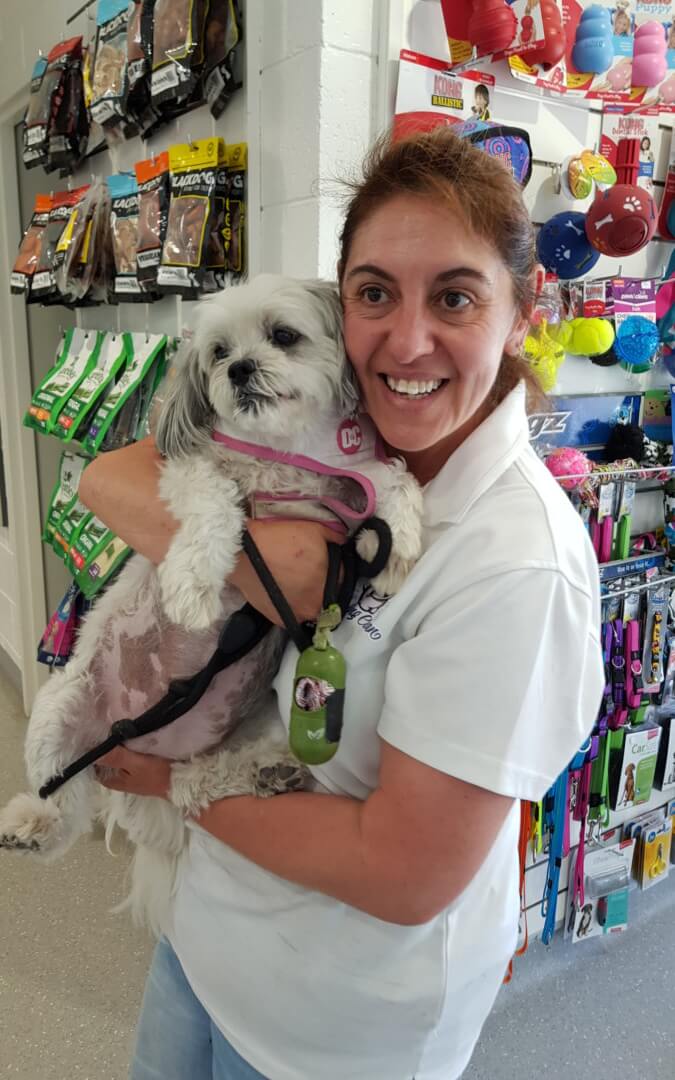Linda is one of our patients who has been receiving treatment for Cushing’s Disease. This is a disease where her adrenal glands start to overproduce the hormone Cortisol. Whilst this alone can be a challenge to manage, Linda’s owner Dana recently noted that she was drinking a lot, and urinating more frequently. Upon further blood and urine testing she was also diagnosed with Diabetes. It is unfortunately not uncommon for some pets to have more than one endocrine disease at the same time.
Linda’s owner Dana now not only has the responsibility of giving her tablets (hidden in peanut butter) twice a day, to control her Cushing’s disease, but must now also treat her diabetes. Dana has to give Linda insulin injections twice daily to help control her blood sugar levels. An insulin pen is used to provide the insulin, which makes dosing a lot more accurate. After explaining how to dial the correct dose, pinch the skin and inject the insulin, Dana was able to give the first dose with us watching. Dana is a very dedicated owner and whilst giving injections was initially daunting, it would seem that after only a short time it has become a daily routine.
It has certainly been a challenging time for Dana who works full time, as a dog groomer. She has had to really plan and manage her days around Linda who needs her medication and insulin injections at the same time each morning and evening, roughly 12hours apart. At this point it has only been a few weeks since starting insulin injections, and Linda has tolerated her Mum giving her injections better than expected.
Dana will need to bring Linda in for blood sugar level testing every few weeks, until her blood sugar levels are well controlled. On the days Linda comes in, she will need to have her sugar levels measured every few hours over the course of a day, this is called a glucose curve and provides us with her highest sugar level and lowest level sugar level of the day. Knowing her curve readings will determine if her insulin dose needs to be adjusted.
Once we achieve a good level of control then Linda’s visits will become much less frequent, perhaps once or twice a year. Dana will also need to keep monitoring her drinking and urination habits and inform us of any increase.




